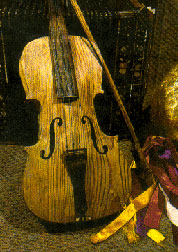
Later, in the Edo Period (17th19th.The revolutionary spirit ushered in by the Enlightenment infused artists with ideals of liberty and individualism. Music In The Romantic Era Romantic Style PeterIt was the biwa players who saw potential in this musical instrument, and use of the shamisen soon spread nationwide. 13 You had the middle ages, renaissance, baroque, classical and romantic eras, each with their own set of very distinct styles and composers. The era of Romantic music is defined as the period of European classical music that runs roughly from 1820 to 1900, as well as music written according to the norms and styles of that period.
Their ideas embody the essence of program music. Here's a piece written by an Idealist composer:Ländler in A Minor | Franz Schubert, 1797-1828Realists insisted that music could and should communicate extra musical ideas: tell a story, suggest a mood or scene, imitate nature, champion political ideals, etc. Their ideas embody the essence of absolute music. However, there is one characteristic central to all Romantic music: the evocation of emotion as a primary goal.There were two main schools of musical thought during the Romantic era: Idealists and Realists.Idealists believed that music was complete in itself that is, stories, poetry, fanciful titles or suggestions of atmosphere were not needed. Thus, there is not an exact definition of the Romantic style, unlike prior eras where composers conformed to an accepted core of beliefs and practices.


These one-movement works were still based on the presentation of contrasting melodies but were shorter and lacked full-blown development sections. Such forms are often spontaneous in feel, as if improvised. Single Movement PiecesNew and somewhat freer one-movement forms for piano solo—ballad, nocturne and fantasy—appeared. Moreover, forms were frequently not symmetrical or balanced as in the Classical era: consecutive phrases vary in length and development sections tend to be longer than their Classical counterparts. Often the strong cadences common at the end of major sections during the Classical era were missing.
Melody is often fragmentary, filled with rhythmic interruptions and use of irregular phrase lengths. Exciting climaxes, melodic leaps, chromaticism and frequent changes in dynamics served to create the tension needed for this type of expression. MelodyMelody is characterized by an intensity of personal feelings. In other words, the constantly shifting keys and chromaticism were used to control the emotional content of the music. Modulation to remote keys was common: modulation was often used to create musical tension and tonal ambiguity—disorient the listener—not only as a means to reach a particular key.
DynamicsRomantic era composers continued the Classical era trend of using dynamics as a dramatic and expressive device. Mood changes were achieved via mode and key changes, sudden and drastic dynamic shifts, contrasts in instrumentation, heavy use of chromaticism (notes and chords outside the key), etc. However, compared to Classical music, these fluctuations tended to be exaggerated and extreme in Romantic music.
Many of these nineteenth century improvements became standard on modern instruments.Nineteenth century orchestras increased greatly in size, growing from the twenty-five piece orchestras of Haydn and Mozart in the late eighteenth century to the one thousand piece orchestras of Mahler in the late nineteenth century. These changes increased the technical potential of performers. Indeed, more than one composer employed firearms, including cannons, in Romantic works.Here's a short example of Romantic era style:The nineteenth century saw the introduction of many mechanical improvements on musical instrument: keys on woodwinds, valves on brass, metal frame on piano, larger guitars, etc. While fortissimo and pianissimo were used relatively sparingly by Haydn and Mozart, improvements in instrument design and enlargement of the orchestra made such extremes of dynamics common place in the nineteenth century. Generally, Romantic composers used dynamic markings in scores more frequently and with finer gradations and extremes than Classical composers.
Timbre became an important part of expression: melodies and chords were often created with specific instruments in mind. The larger orchestra produced a richer, thicker texture and increased the range of available timbres.


 0 kommentar(er)
0 kommentar(er)
